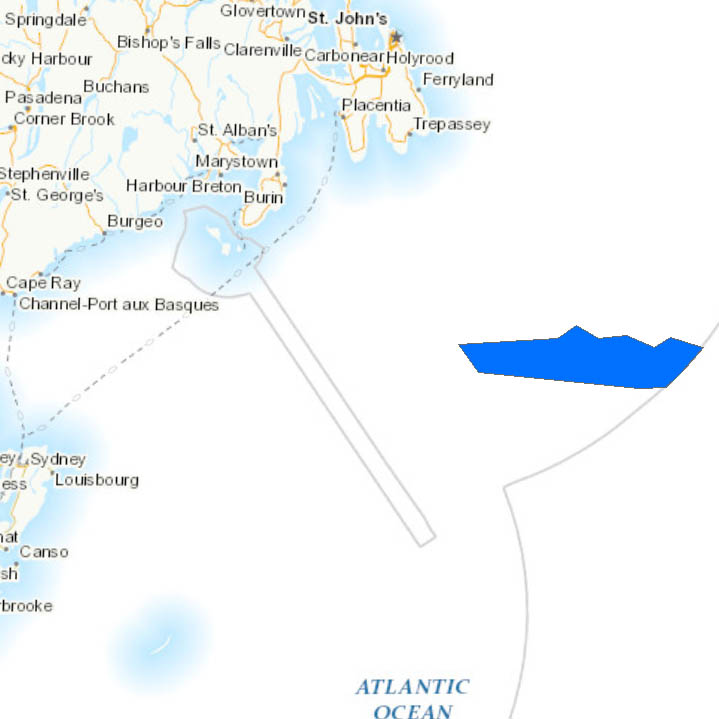Division 3O Coral closure
- Location
- Newfoundland-Labrador Shelves Bioregion (Newfoundland and Labrador)
- Approximate Size (km2) contribution to Marine Conservation Targets
- 10,422 km2 (portion inside EEZ)
- Approximate % coverage contribution to Marine Conservation Targets
- 0.18% (portion inside EEZ)
- Conservation Objective
- Protect corals and sponges
Ecological Components of Interest
Species of regional importance: corals and sponges
- Why they are important: Corals and sponges are fragile, slow to recover, structure-providing species.
Habitat that is important to biodiversity conservation: corals and sponges
- Why it is important: The high concentrations of these structure-forming species provides habitat for many other species.
Prohibitions
The ecological components of interest are effectively conserved through the following prohibitions:
All bottom fishing activities.
Other Considerations
No human activities that are incompatible with the conservation of the ecological components of interest may occur or be foreseeable within the area.
Environmental Context
The closure overlaps a significant portion of the Southwest Shelf Edge and Slope Ecologically and Biologically Significant Area. This area supports a significant diversity of species and habitats that live in slope and shelf environments. Depleted species such as Atlantic cod, redfish and Leatherback sea turtles are found in the area.
The closure includes areas of sea pens and large and small gorgonian corals identified as significant under the Policy for Managing the Impact of Fishing on Sensitive Benthic Areas.
Corals play an important functional role for numerous forms of marine life. They act as spawning and breeding grounds, nurseries, and refuges for many aquatic species.
The dense aggregations created by large, structure-forming cold-water corals can alter bottom currents and provide niche space for other organisms.
Prohibition on bottom-contact gear can protect not only the corals and sponges but also a diversity of other species of fish and invertebrates that utilize the structural habitat that corals and sponges provide. This area can act as a natural refuge area that may contribute to increased species productivity, which in turn, potentially lead to increased abundance within and adjacent to the area.
- Date modified:
